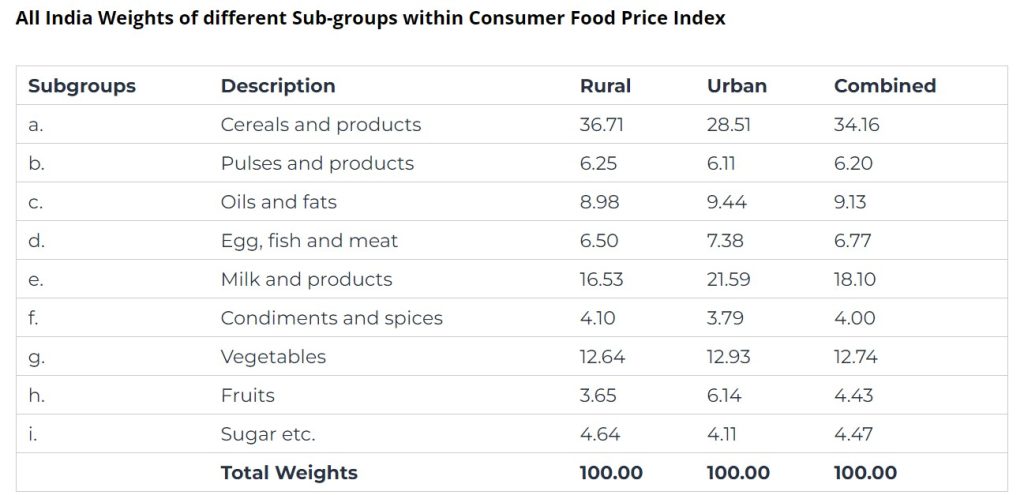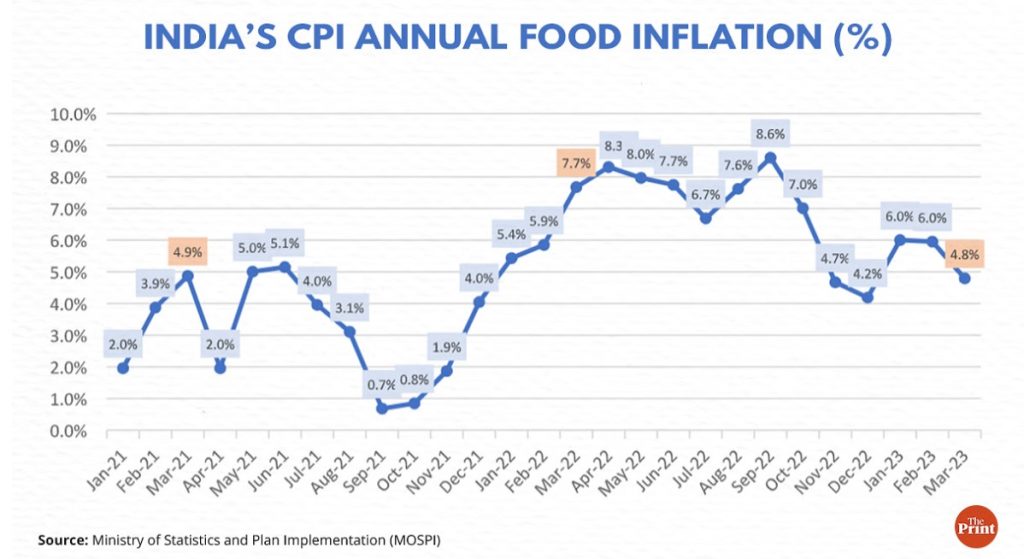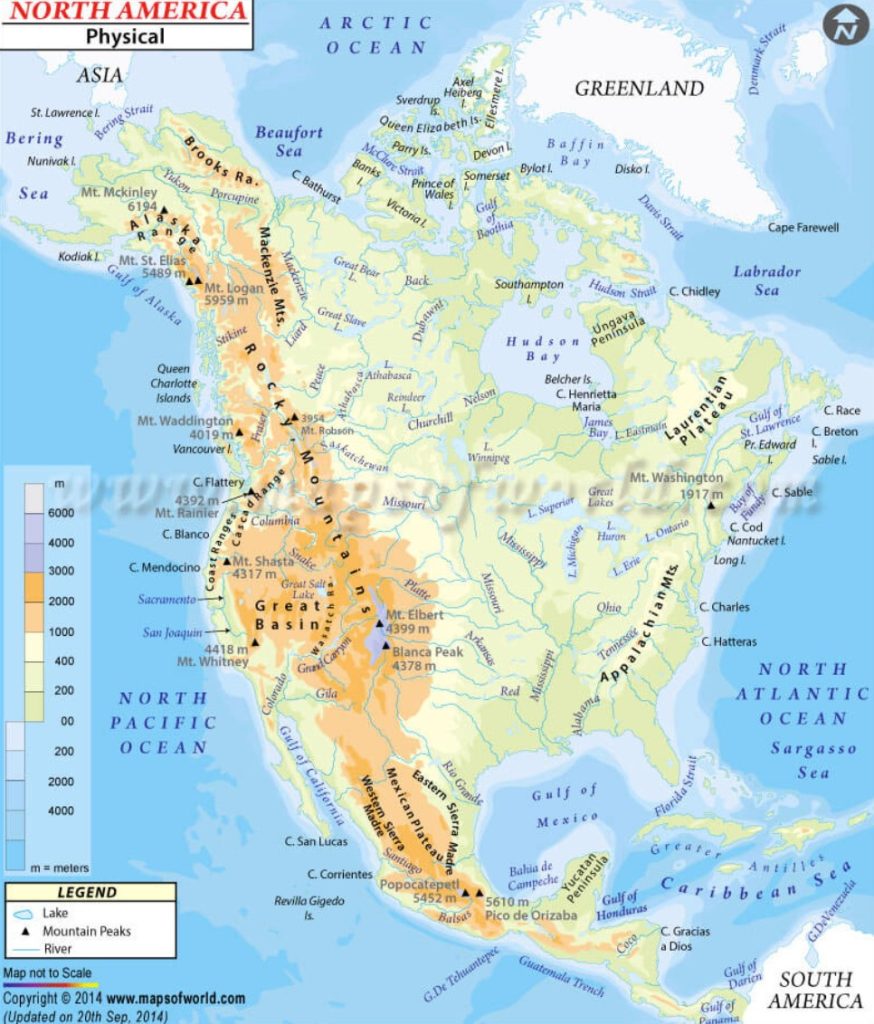CONTENTS
- Anchoring Inflation for Long-Term Growth
- Coalition Government and the India- US Diplomacy
Anchoring Inflation for Long-Term Growth
Context:
The RBI’s Monetary Policy Committee (MPC) has opted for the eighth consecutive time to maintain the benchmark repo rate at 6.50%, citing concerns that high food inflation could undermine efforts to achieve lasting price stability. Governor Shaktikanta Das, who recently suggested that inflation was beginning to retreat, highlighted the risk that persistent increases in food prices pose to the overall disinflation trajectory as the reason for the MPC’s decision.
Relevance:
GS3-
- Fiscal Policy
- Inclusive Growth
Mains Question:
Anchoring inflation will be the base for long-term growth. Analyse in the context of the recent trends of Food Price Inflation in India. (10 Marks, 150 Words).
Consumer Food Price Index:
- It measures the change in retail prices of food products consumed by a specified population group in a particular area, relative to a base year.
- The Central Statistics Office (CSO) under the Ministry of Statistics and Programme Implementation (MOSPI) began publishing Consumer Food Price Indices (CFPI) for three segments—rural, urban, and combined—on a nationwide basis starting in May 2014.
- Similar to the Consumer Price Index (CPI), the CFPI is calculated monthly using the same methodology as the CPI. The current base year is 2012.
- The CSO updated the base year for both the CPI and CFPI from 2010=100 to 2012=100 starting with the indices released for January 2015.
- CFPI (Rural/Urban/Combined) is compiled as a weighted average of the Cereals and Products subgroup of the CPI for each respective category—Rural, Urban, and Combined.
The modified weights for these subgroups within the CFPI are as follows:

Rising Food Inflation- Recent Trends:

- Rural consumers experienced food price increases of 8.75%, which is 19 basis points higher than the increases for urban consumers.
- Cereal prices, a significant category in food, rose to 8.63%.
- Data from the Department of Consumer Affairs indicated substantial year-on-year increases in the average prices of rice and wheat.
- Vegetables have maintained double-digit inflation for six consecutive months, reaching 27.8% due to extreme temperatures.
- Pulses have also experienced double-digit inflation for the eleventh consecutive month.
- Indicators such as Crisil’s food plate costs imply that price increases, driven by spikes in tomato, onion, and potato prices, may have accelerated further in May.
- On June 8, the Centre for Monitoring Indian Economy (CMIE) predicted that headline retail inflation likely rose by 31 basis points to 5.14% last month, primarily due to a 40 basis points increase in food price inflation to 9.1%.
- The Consumer Price Index (CPI) for rural areas was 5.43%, notably higher than the urban rate of 4.11%.
- This disparity highlights the challenges faced by rural households, such as the impact of normal monsoons and high temperatures.
Factors Contributing to India’s Elevated Food Inflation:
Temperature and Weather Challenges:
- Adverse weather conditions, including predictions of a weak monsoon and heatwaves, have affected crop yields, particularly for cereals, pulses, and sugar, which require significant water for growth.
- This has led to supply shortages and higher domestic prices, with cereal and pulse inflation showing double-digit increases in April 2024.
- The MPC, with a 4-2 majority vote, emphasized its focus on withdrawing accommodation to align inflation progressively to the 4% target, noting the difficulty in achieving this amid increasing climate-related supply shocks. The CMIE attributed the rise in fruit and vegetable prices to last month’s heatwaves.
Fuel Prices:
- Fuel prices, a critical input in agriculture, have significantly increased in recent years.
- A 1% increase in fuel inflation results in a 0.13% rise in food inflation, with the impact gradually diminishing over the next 12 months.
Supply Chain Disruptions:
- Disruptions in the supply chain, due to transportation constraints, labor shortages, and logistical challenges, have reduced the availability of food products, leading to price hikes.
- Vegetables have continued to experience double-digit inflation for six consecutive months, reaching 27.8%, exacerbated by the lack of efficient storage facilities, which leads to the wastage of perishable items.
Global Effects:
- Despite a decrease in global food prices, India’s food prices remain high due to limited transmission of international prices to domestic markets.
- The Russia-Ukraine war has acted as a deterrent, affecting imports. India heavily depends on imports for edible oils (60% of consumption) and pulses, while for most other agricultural commodities like cereals, sugar, dairy, fruits, and vegetables, it is an exporter.
- Food inflation, measured by the Consumer Food Price Index, rose to a provisional 8.7% in April from 8.52% in March.
Other Factors Contributing to Inflation:
- The MPC is acutely aware that, beyond the threat from rising food costs—which are vulnerable to the low water storage levels in the country’s reservoirs and the ongoing exceptionally hot summer—escalating prices of industrial metals could disrupt the deflationary trend in core inflation.
- Additionally, the uncertain outlook for crude oil prices, due to tensions in West Asia and output cuts by OPEC+ nations, adds to the uncertainty of the inflation path.
Conclusion:
The RBI’s recent surveys highlight why price stability is crucial for policymakers. Households surveyed in May expect inflation to rise for all major product groups over the next three months and one year. Consumer confidence also declined from the March survey, with almost 80% of respondents anticipating price increases over the next year. Governor Das is justified in his steadfast focus on anchoring inflation expectations, as it is essential for sustained long-term growth.
Coalition Government and the India- US Diplomacy
Context:
India has voted, and the results are in. The country has returned to an era of coalition governments, with alliance partners significantly influencing key policy decisions, marking the end of a decade of single-party dominance. This shift is expected to persist for the next ten years. The voters’ decision will have lasting effects on India’s foreign policy and diplomatic direction.
Relevance:
GS2-
- Bilateral, Regional and Global Groupings and Agreements involving India and/or affecting India’s interests
- Effect of Policies and Politics of Developed and Developing Countries on India’s interests, Indian Diaspora
Mains Question:
Does India need to recalibrate its diplomatic priorities due to the formation of a coalition government at the centre? Discuss in the context of India- US relations. (15 Marks, 250 Words).
Facets of the India-US Relationship:
The stable relationship with the US, developed under the government over the past decade, is expected to remain unaffected.

Financial Ties:
- Most US businesses operating in India might feel reassured by the coalition government verdict, as it alleviates concerns (voiced privately by their US-based colleagues) about potential overreach by a prime minister with a large majority.
- The presence of multiple alliance partners influencing key policy decisions can be seen as a positive development. Coalition governments, with their inherent checks and balances, are less likely to make unilateral decisions.
- US and global investors would feel secure in India as long as there are no unexpected protectionist measures and the market continues to grow.
Technology Partnership:
- The technology partnership, complementing the existing trade partnership, enjoys bipartisan support in Washington.
- Joint military exercises, intelligence sharing of strategic importance (despite India not being part of the Five Eyes network), cooperation in semiconductor technology, and collaboration on standards and regulations for critical and emerging technologies like AI are unlikely to be affected.
- Consequently, even if Mr. Trump returns to power in the US later this year, it is unlikely to disrupt the India-US bilateral relationship.
- Historically, India and the US have demonstrated the ability to handle sensitive issues, such as the alleged plot against India-designated terrorist G S Pannun, through private discussions.
Indo-Pacific region:
- Experts also note that the US would appreciate having a stable democratic ally in Asia to counter China’s aggression in the Indo-Pacific region.
- India’s participation in plurilateral platforms like QUAD, I2U2, and broader UN engagements would remain stable.
- However, high-profile state visits and grandiose events, such as Trump’s visit in 2019 or the Indian PM’s state visit to the US in 2023, might give way to more discreet, behind-the-scenes diplomatic interactions.
- Despite occasional criticism from US think tanks and policy experts on issues like human rights, polarizing speeches, and freedom of speech and religion in India, there is strong bipartisan support for India, and the deep relationship between the two nations is expected to remain unchanged.
- Unlike the situation with the India-US civil nuclear deal, which weakened the UPA government due to the withdrawal of a key ally’s support, there are currently no such threats to the bilateral relationship, even with a coalition government in India.
- Washington and New Delhi have effectively educated their senior lawmakers, politicians, think tanks, and experts on both sides about the strategic importance of their relationship.
- Despite occasional criticism from his party colleagues or pressure groups for being too lenient towards India on certain issues, President Biden recognizes the importance of this relationship in the current context.
Conclusion:
A new Indian ambassador to the US is expected to be appointed in the coming months, following the unsuccessful election bid of the former ambassador post-retirement in 2024. The Indian ambassador to the US plays a crucial role in building consensus across political lines on various bilateral issues. The selection of the next ambassador will be an important development to monitor.




